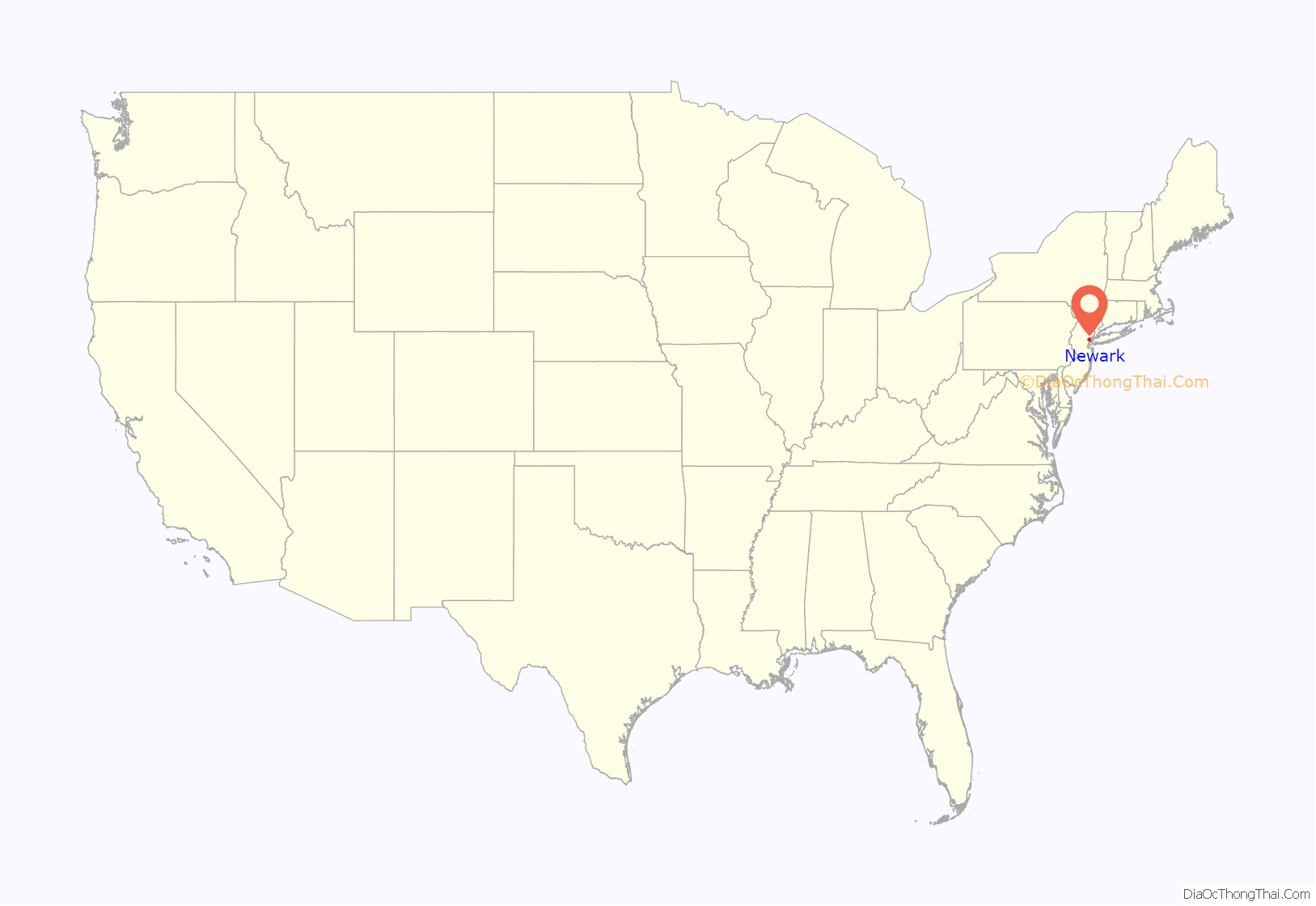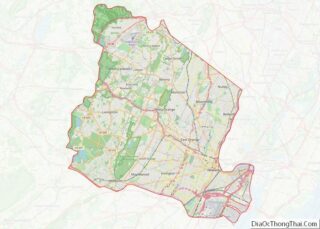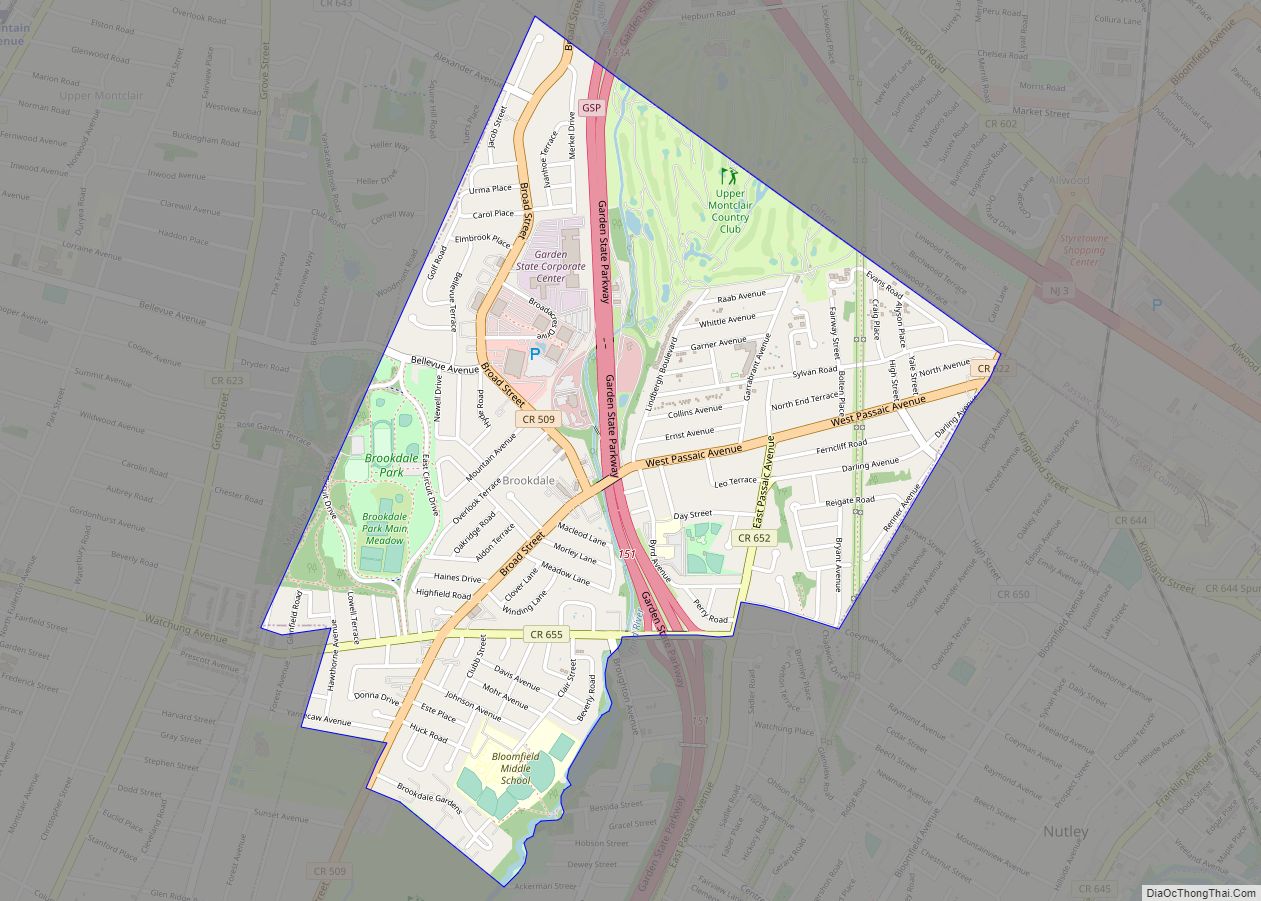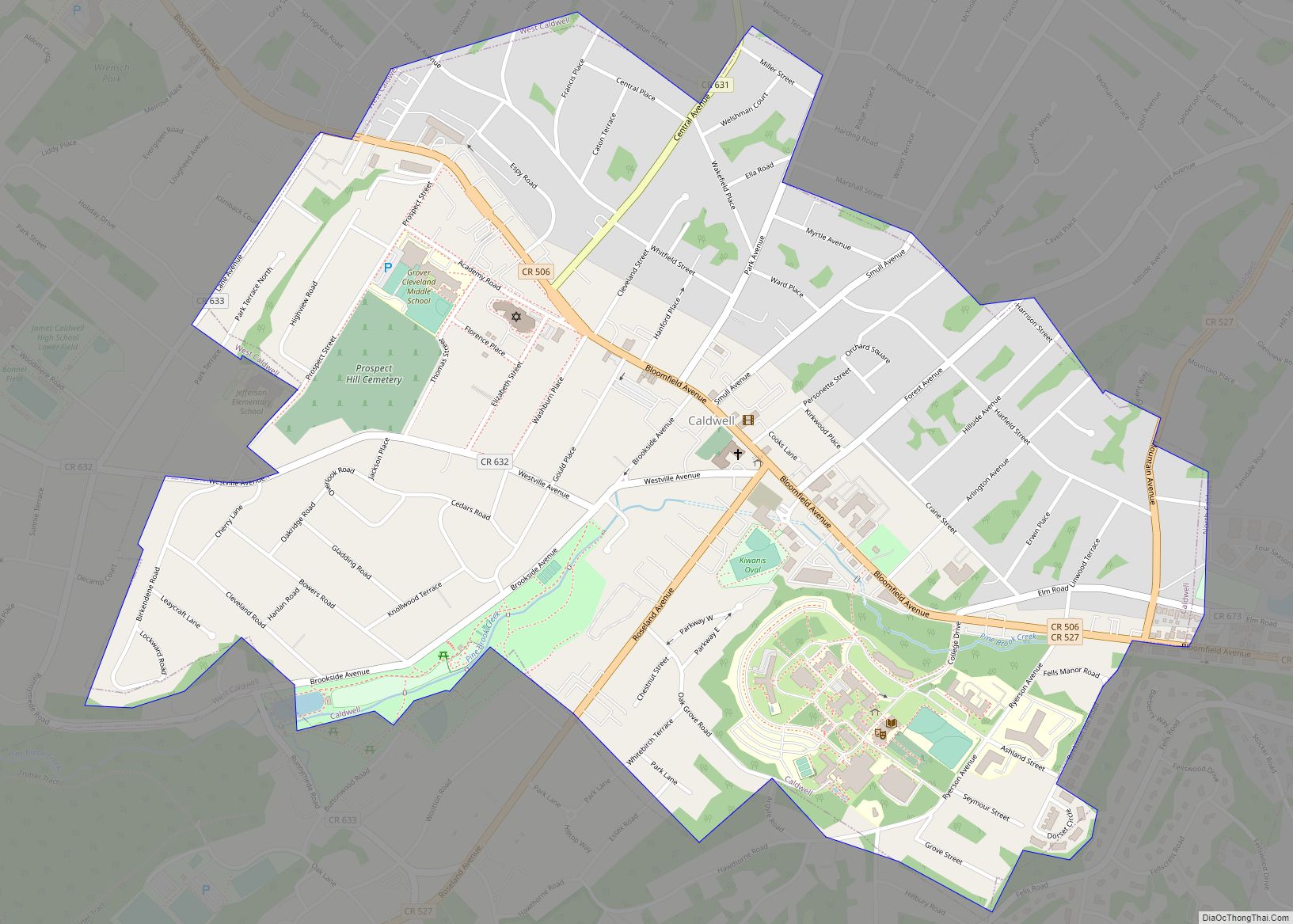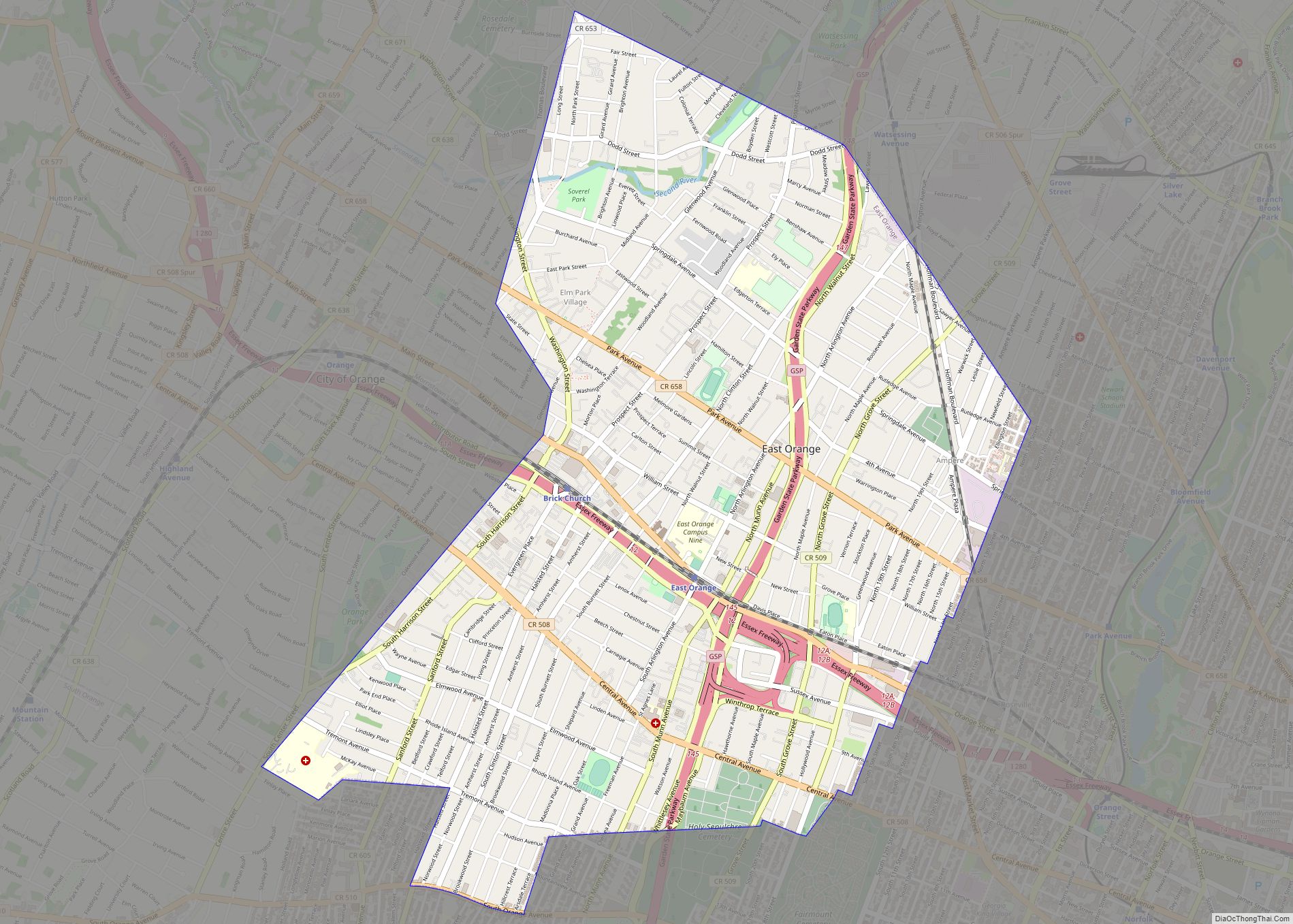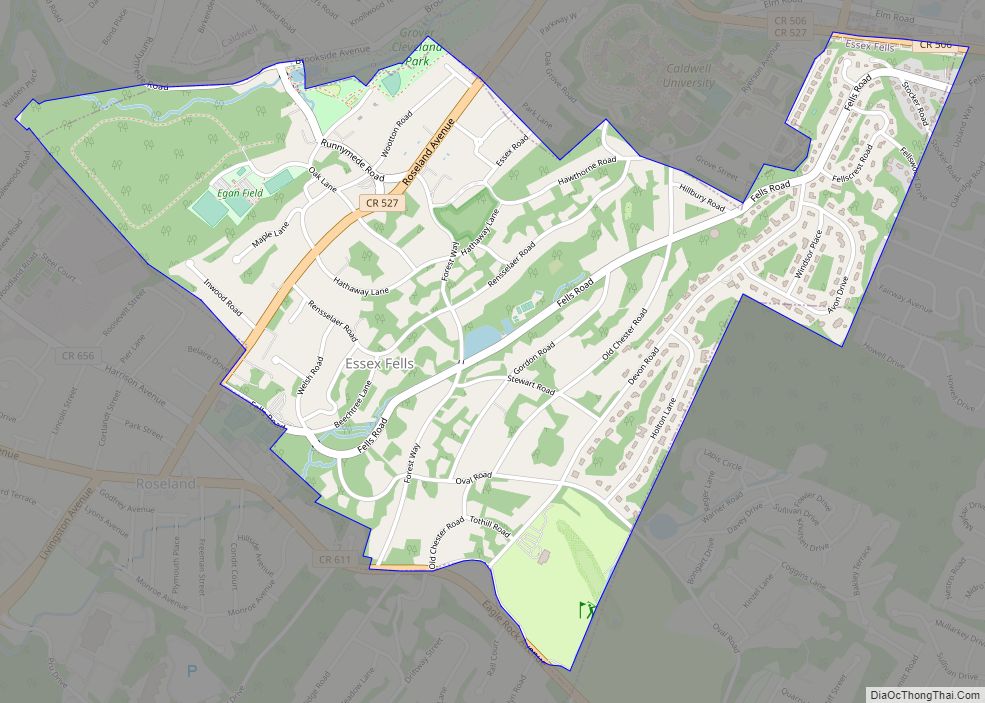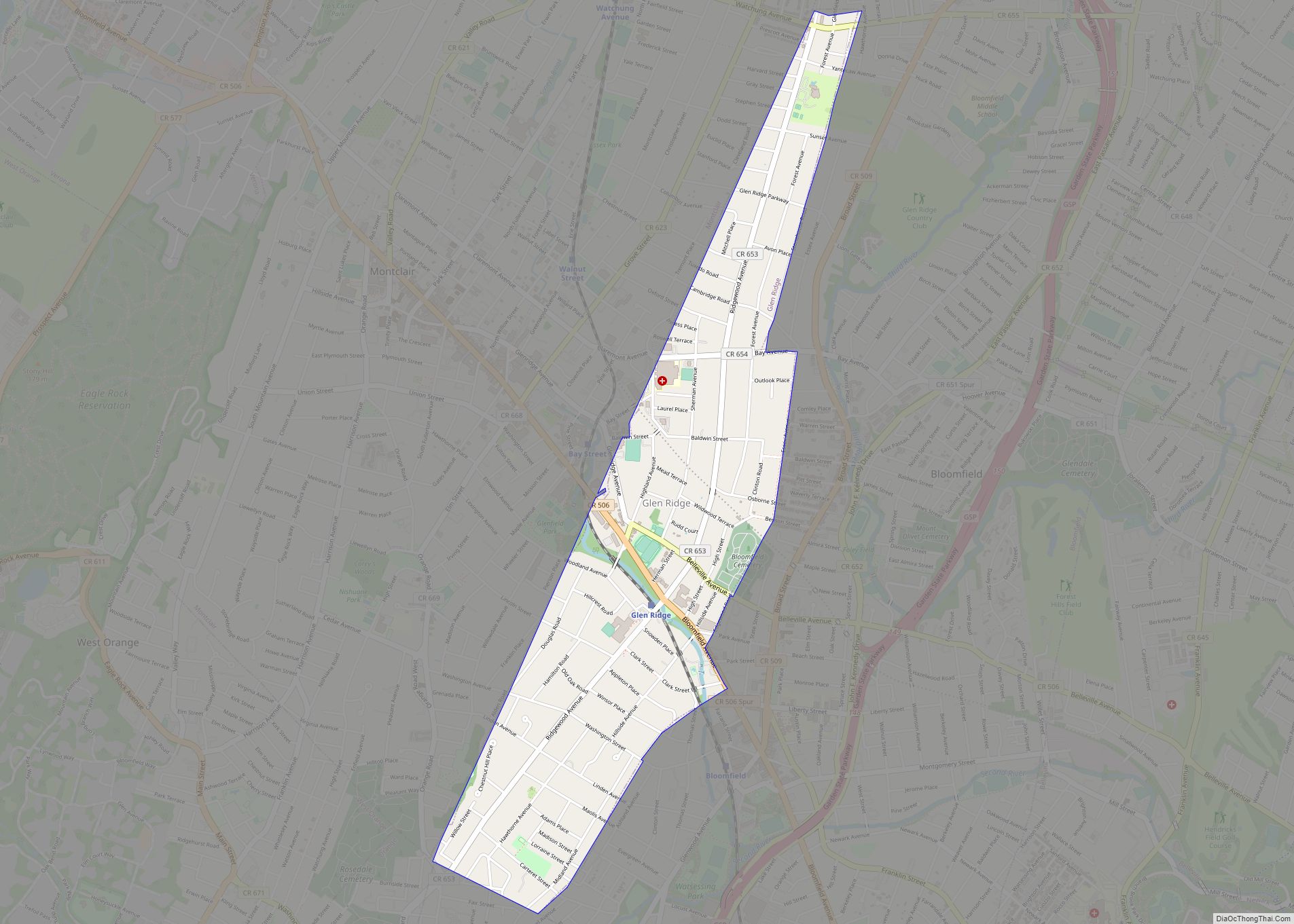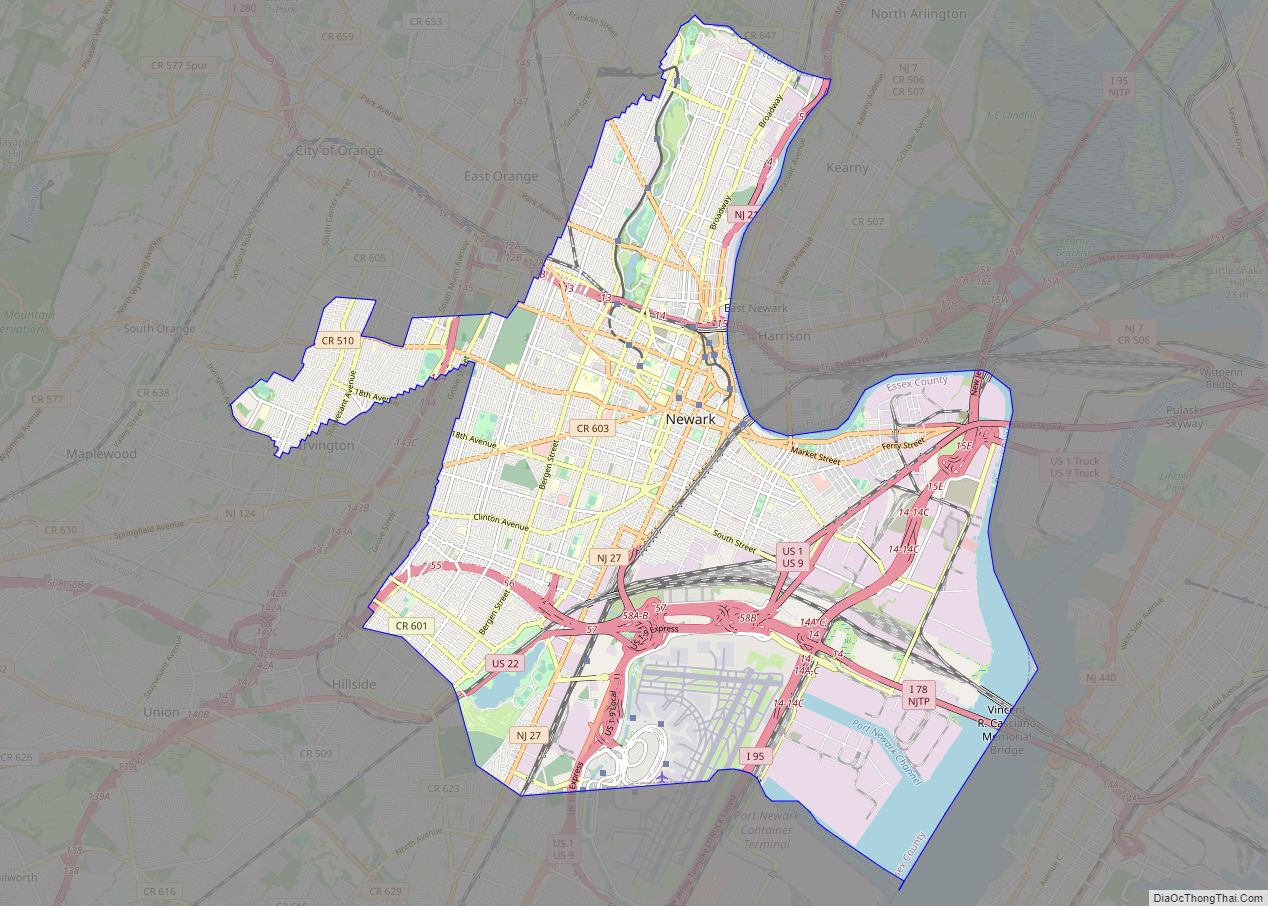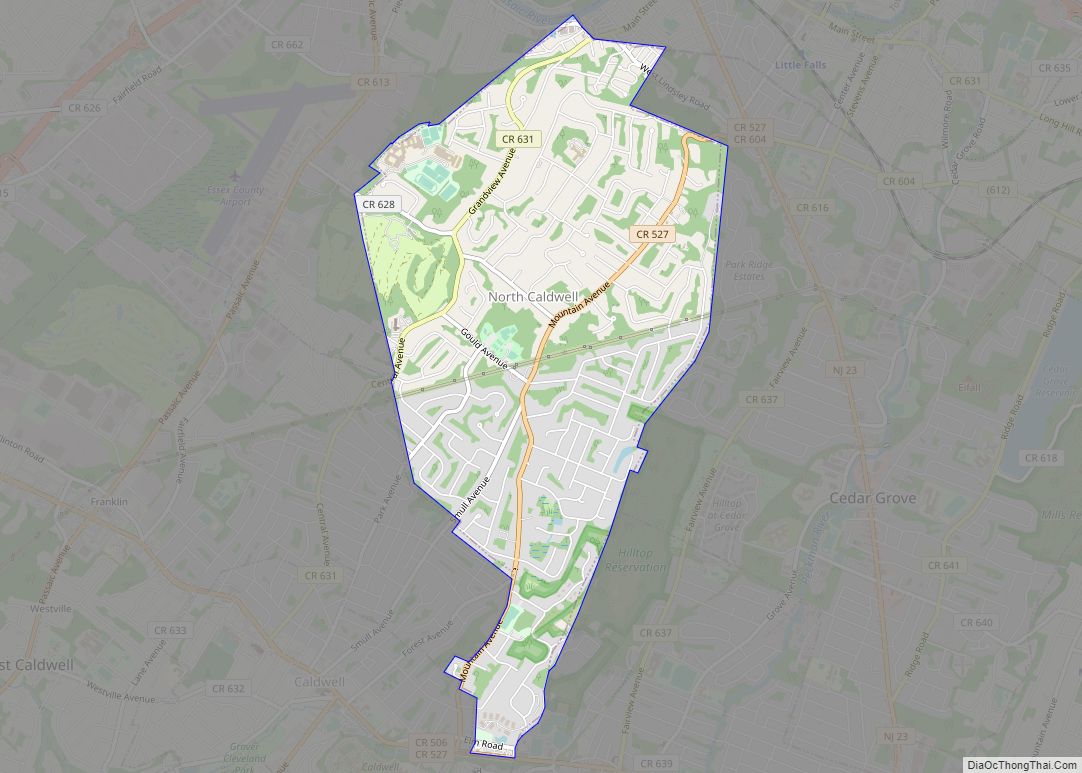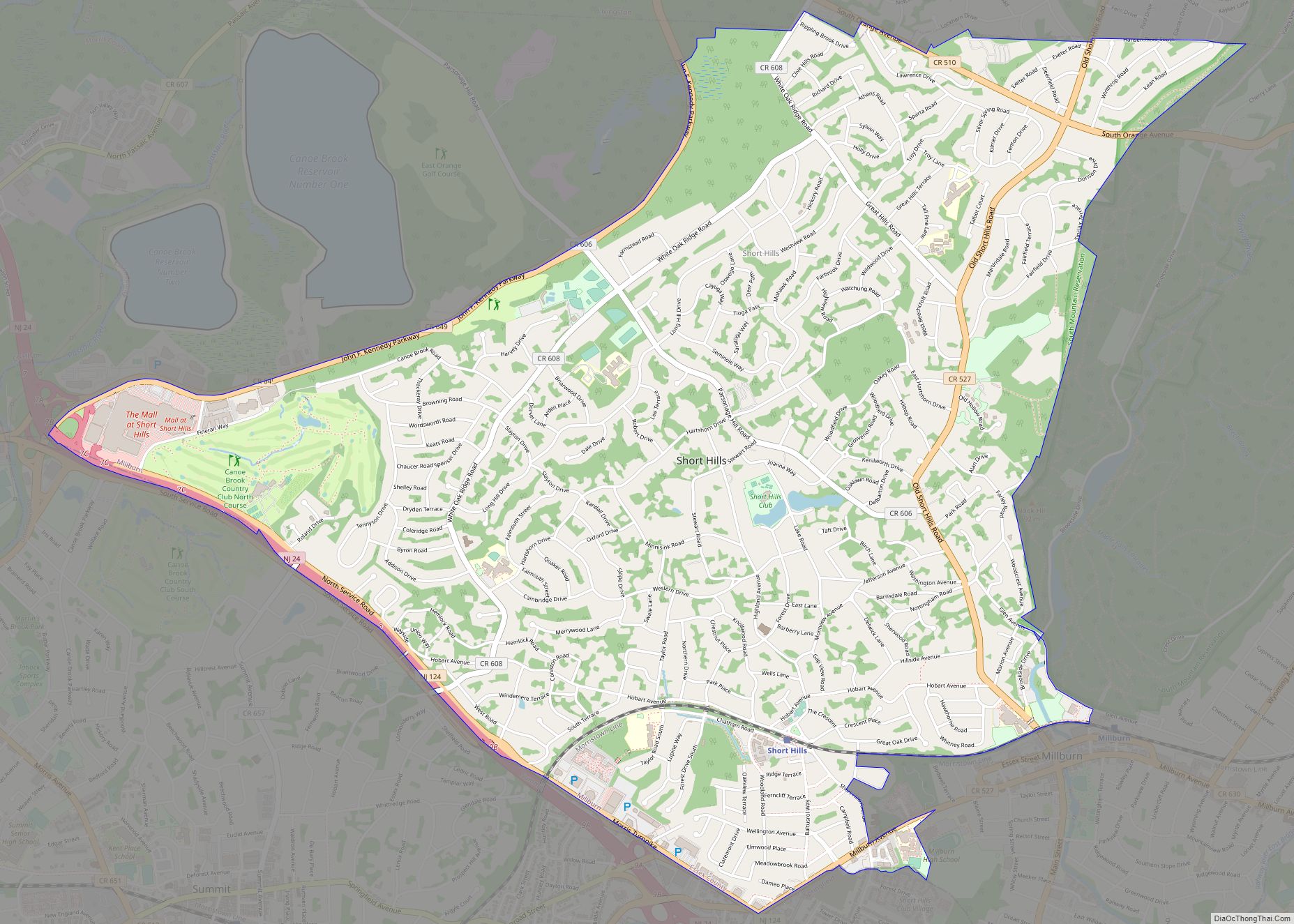Newark (/ˈnjuːərk/ NEW-ərk, locally [nʊəɹk]) is the most populous city in the U.S. state of New Jersey and the seat of Essex County. As of the 2020 census, the city’s population was 311,549, an increase of 34,409 (+12.4%) from the 2010 census count of 277,140, which in turn reflected an increase of 3,594 (+1.3%) from the 273,546 counted at the 2000 census. The Population Estimates Program calculated a population of 307,220 for 2021, making it the 66th-most populous municipality in the nation.
Settled in 1666 by Puritans from New Haven Colony, Newark is one of the oldest cities in the United States. Its location at the mouth of the Passaic River (where it flows into Newark Bay) has made the city’s waterfront an integral part of the Port of New York and New Jersey. Today, Port Newark–Elizabeth is the primary container shipping terminal of the busiest seaport on the U.S. East Coast. Newark Liberty International Airport was the first municipal commercial airport in the United States, and today is one of its busiest.
Several companies have their headquarters in Newark, including Prudential, PSEG, Panasonic Corporation of North America, Audible.com, IDT Corporation, Manischewitz and AeroFarms.
A number of higher education institutions are also in the city, including the Newark campus of Rutgers University (which includes law and medical schools and the Rutgers Institute of Jazz Studies); University Hospital (formerly the University of Medicine and Dentistry of New Jersey which included the schools of medicine and dentistry now under Rutgers University); the New Jersey Institute of Technology; and Seton Hall University’s law school. The United States District Court for the District of New Jersey is also located in the city.
Local cultural venues include the New Jersey Performing Arts Center, Newark Symphony Hall, the Prudential Center, The Newark Museum of Art, and the New Jersey Historical Society.
Newark is divided into five political wards (East, West, South, North and Central) and contains neighborhoods ranging in character from bustling urban districts to quiet suburban enclaves. Newark’s Branch Brook Park is the oldest county park in the United States and is home to the nation’s largest collection of cherry blossom trees, numbering over 5,000.
| Name: | Newark city |
|---|---|
| LSAD Code: | 25 |
| LSAD Description: | city (suffix) |
| State: | New Jersey |
| County: | Essex County |
| Founded: | Religious colony (1663) |
| Elevation: | 13 ft (4 m) |
| Total Area: | 25.88 sq mi (67.04 km²) |
| Land Area: | 24.14 sq mi (62.53 km²) |
| Water Area: | 1.74 sq mi (4.51 km²) 6.72% |
| Total Population: | 311,549 |
| Population Density: | 12,903.8/sq mi (4,982.2/km²) |
| Area code: | 862/973 |
| FIPS code: | 3451000 |
| GNISfeature ID: | 0885317 |
| Website: | www.newarknj.gov |
Online Interactive Map
Click on ![]() to view map in "full screen" mode.
to view map in "full screen" mode.
Newark location map. Where is Newark city?
History
Newark was settled in 1666 by Connecticut Puritans led by Robert Treat from the New Haven Colony. It was conceived as a theocratic assembly of the faithful, though this did not last for long as new settlers came with different ideas. On October 31, 1693, it was organized as a New Jersey township based on the Newark Tract, which was first purchased on July 11, 1667. Newark was granted a royal charter on April 27, 1713. It was incorporated on February 21, 1798, by the New Jersey Legislature’s Township Act of 1798, as one of New Jersey’s initial group of 104 townships. During its time as a township, portions were taken to form Springfield Township (April 14, 1794), Caldwell Township (February 16, 1798; now known as Fairfield Township), Orange Township (November 27, 1806), Bloomfield Township (March 23, 1812) and Clinton Township (April 14, 1834, remainder reabsorbed by Newark on March 5, 1902). Newark was reincorporated as a city on April 11, 1836, replacing Newark Township, based on the results of a referendum passed on March 18, 1836. The previously independent Vailsburg borough was annexed by Newark on January 1, 1905. In 1926, South Orange Township changed its name to Maplewood. As a result of this, a portion of Maplewood known as Ivy Hill was re-annexed to Newark’s Vailsburg.
The name of the city is thought to derive from Newark-on-Trent, England, because of the influence of the original pastor, Abraham Pierson, who came from Yorkshire but may have ministered in Newark, Nottinghamshire. But Pierson is also supposed to have said that the community reflecting the new task at hand should be named “New Ark” for “New Ark of the Covenant” and some of the colonists saw it as “New-Work”, the settlers’ new work with God. Whatever the origins, the name was shortened to Newark, although references to the name “New Ark” are found in preserved letters written by historical figures such as David Ogden in his claim for compensation, and James McHenry, as late as 1787.
During the American Revolutionary War, British troops made several raids into the town. The city saw tremendous industrial and population growth during the 19th century and early 20th century, and experienced racial tension and urban decline in the second half of the 20th century, culminating in the 1967 Newark riots.
The city has experienced revitalization since the 1990s.
Newark Road Map
Newark city Satellite Map
Geography
According to the United States Census Bureau, the city had a total area of 25.89 square miles (67.1 km), including 24.14 square miles (62.5 km) of land and 1.74 square miles (4.5 km) of water (6.72%). It has the third-smallest land area among the 100 most populous cities in the U.S., behind neighboring Jersey City and Hialeah, Florida. The city’s altitude ranges from 0 (sea level) in the east to approximately 230 feet (70 m) above sea level in the western section of the city. Newark is essentially a large basin sloping towards the Passaic River, with a few valleys formed by meandering streams. Historically, Newark’s high places have been its wealthier neighborhoods. In the 19th century and early 20th century, the wealthy congregated on the ridges of Forest Hill, High Street, and Weequahic.
Until the 20th century, the marshes on Newark Bay were difficult to develop, as the marshes were essentially wilderness, with a few dumps, warehouses, and cemeteries on their edges. During the 20th century, the Port Authority of New York and New Jersey was able to reclaim 68 acres (28 ha) of the marshland for the further expansion of Newark Liberty International Airport, as well as the growth of the port lands.
Newark is surrounded by residential suburbs to the west (on the slope of the Watchung Mountains), the Passaic River and Newark Bay to the east, dense urban areas to the south and southwest, and middle-class residential suburbs and industrial areas to the north. The city is the largest in New Jersey’s Gateway Region, which is said to have received its name from Newark’s nickname as the “Gateway City”.
The city borders the municipalities of Belleville, Bloomfield, East Orange, Irvington, Maplewood and South Orange in Essex County; Bayonne, East Newark, Harrison, Jersey City and Kearny in Hudson County; and Elizabeth and Hillside in Union County.
Neighborhoods
Newark is the second-most racially diverse municipality in the state, behind neighboring Jersey City. It is divided into five political wards, which are often used by residents to identify their place of habitation. In recent years, residents have begun to identify with specific neighborhood names instead of the larger ward appellations. Nevertheless, the wards remain relatively distinct. Industrial uses, coupled with the airport and seaport lands, are concentrated in the East and South wards, while residential neighborhoods exist primarily in the North, Central, and West Wards.
State law requires that wards be compact and contiguous and that the largest ward may not exceed the population of the smallest by more than 10% of the average ward size. Ward boundaries are redrawn, as needed, by a board of ward commissioners consisting of two Democrats and two Republicans appointed at the county level and the municipal clerk. Redrawing of ward lines in previous decades have shifted traditional boundaries, so that downtown currently occupies portions of the East and Central wards. The boundaries of the wards are altered for various political and demographic reasons and sometimes gerrymandered.
Newark’s Central Ward, formerly known as the old Third Ward, contains much of the city’s history including the original squares Lincoln Park, Military Park and Harriet Tubman Square. The ward contains the University Heights, The Coast, historic Grace Episcopal Church, Government Center, Springfield/Belmont and Seventh Avenue neighborhoods. Of these neighborhood designations only University Heights, a more recent designation for the area that was the subject of the 1968 novel Howard Street by Nathan Heard, is still in common usage. The Central Ward extends at one point as far north as 2nd Avenue.
In the 19th century, the Central Ward was inhabited by Germans and other white Catholic and Protestant groups. The German inhabitants were later replaced by Jews, who were then replaced by African Americans. The increased academic footprint in the University Heights neighborhood has produced gentrification, with landmark buildings undergoing renovation. Located in the Central Ward is the nation’s largest health sciences university, UMDNJ-New Jersey Medical School. It is also home to three other universities – New Jersey Institute of Technology (NJIT), Rutgers University – Newark, and Essex County College. The Central Ward forms the present-day heart of Newark, and includes 26 public schools, two police precincts, including headquarters, four firehouses, and one branch library.
The North Ward is surrounded by Branch Brook Park. Its neighborhoods include Broadway, Mount Pleasant, Upper Roseville and the affluent Forest Hill section. Forest Hill contains the Forest Hill Historic District, which is registered on state and national historic registers, and contains many older mansions and colonial homes. A row of residential towers with security guards and secure parking line Mt. Prospect Avenue in the Forest Hill neighborhood. The North Ward has lost geographic area in recent times; its southern boundary is now significantly further north than the traditional boundary near Interstate 280. The North Ward had its own Little Italy, centered on heavily Italian Seventh Avenue and the area of St. Lucy’s Church; demographics have transitioned to Latino in recent decades, though the ward as a whole remains ethnically diverse.
The West Ward comprises the neighborhoods of Vailsburg, Ivy Hill, West Side, Fairmount and Lower Roseville. It is home to the historic Fairmount Cemetery. The West Ward, once a predominantly Irish-American, Polish, and Ukrainian neighborhood, is now home to neighborhoods composed primarily of Latinos, African Americans, and Caribbean Americans. The West Ward has struggled in recent years with elevated rates of crime, particularly violent crime.
The South Ward comprises the Weequahic, Clinton Hill, Dayton, and South Broad Valley neighborhoods. The South Ward, once home to residents of predominantly Jewish descent, now has ethnic neighborhoods made up primarily of African Americans and Hispanics. The city’s second-largest hospital, Newark Beth Israel Medical Center, can be found in the South Ward, as can seventeen public schools, five daycare centers, three branch libraries, one police precinct, a mini-precinct, and three fire houses.
The East Ward consists of much of Newark’s Downtown commercial district, as well as the Ironbound neighborhood, where much of Newark’s industry was in the 19th century. Today, the Ironbound (also known as “Down Neck” and “The Neck”) is a destination for shopping, dining, and nightlife. A historically immigrant-dominated section of the city, the Ironbound in recent decades has been termed “Little Portugal” and “Little Brazil” due to its heavily Portuguese and Brazilian population, Newark being home to one of the largest Portuguese speaking communities in the United States. In addition, the East Ward has become home to various Latin Americans, especially Ecuadorians, Peruvians, and Colombians, alongside Puerto Ricans, African Americans, and commuters to Manhattan. Public education in the East Ward consists of East Side High School and six elementary schools. The ward is largely composed of densely packed but well maintained housing and streets, primarily large apartment buildings and rowhouses.
Climate
Newark lies in the transition between a humid subtropical and humid continental climate (Köppen Cfa/Dfa), with cold winters and hot humid summers. The January daily mean is 32.8 °F (0.4 °C), and although temperatures below 10 °F (−12 °C) are to be expected in most years, sub-0 °F (−18 °C) readings are rare; conversely, some days may warm up to 50 °F (10 °C). The average seasonal snowfall is 31.5 inches (80 cm), though variations in weather patterns may bring sparse snowfall in some years and several major nor’easters in others, with the heaviest 24-hour fall of 25.9 inches (66 cm) occurring on December 26, 1947. Spring and autumn in the area are generally unstable yet mild. The July daily mean is 78.2 °F (25.7 °C), and highs exceed 90 °F (32 °C) on an average 28.3 days per year, not factoring in the often higher heat index. Precipitation is evenly distributed throughout the year with the summer months being the wettest and fall months being the driest.
The city receives precipitation ranging from 2.9 to 4.6 inches (74 to 117 mm) per month, usually falling on 8 to 12 days per month. Extreme temperatures have ranged from −14 °F (−26 °C) on February 9, 1934 to 108 °F (42 °C) on July 22, 2011. The January freezing isotherm that separates Newark into Dfa and Cfa zones approximates the NJ Turnpike.
See also
Map of New Jersey State and its subdivision: Map of other states:- Alabama
- Alaska
- Arizona
- Arkansas
- California
- Colorado
- Connecticut
- Delaware
- District of Columbia
- Florida
- Georgia
- Hawaii
- Idaho
- Illinois
- Indiana
- Iowa
- Kansas
- Kentucky
- Louisiana
- Maine
- Maryland
- Massachusetts
- Michigan
- Minnesota
- Mississippi
- Missouri
- Montana
- Nebraska
- Nevada
- New Hampshire
- New Jersey
- New Mexico
- New York
- North Carolina
- North Dakota
- Ohio
- Oklahoma
- Oregon
- Pennsylvania
- Rhode Island
- South Carolina
- South Dakota
- Tennessee
- Texas
- Utah
- Vermont
- Virginia
- Washington
- West Virginia
- Wisconsin
- Wyoming
